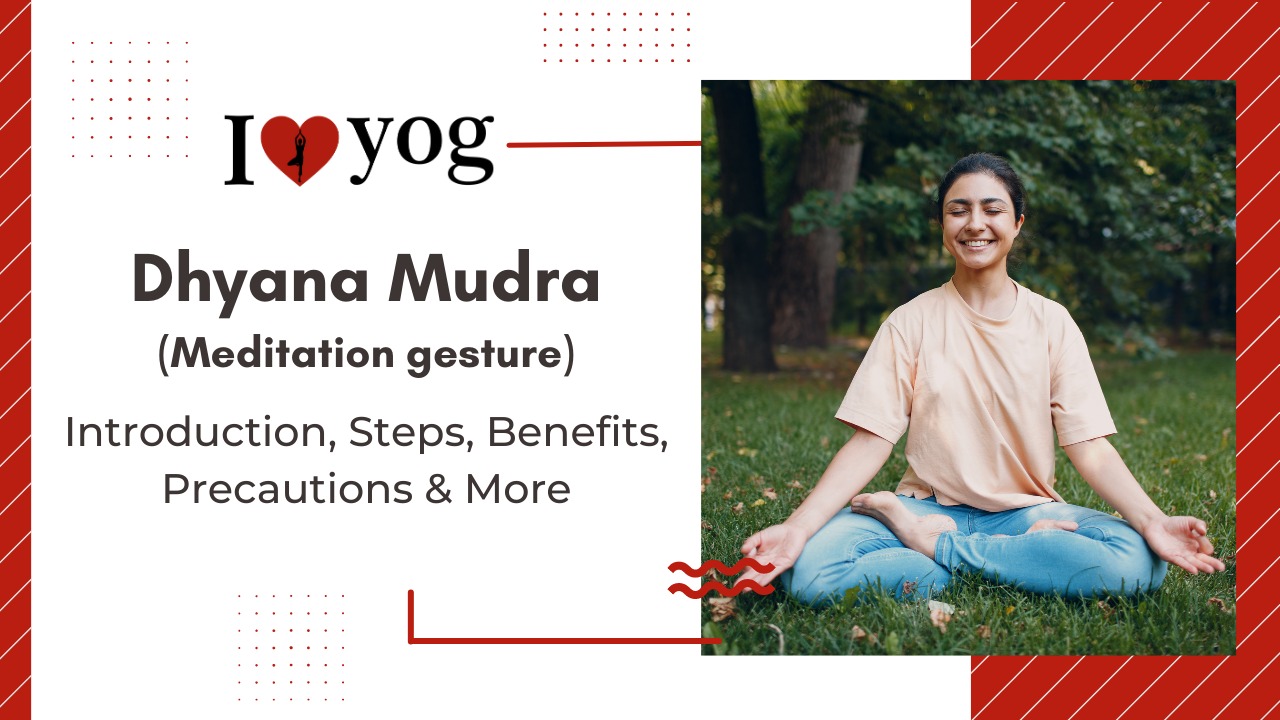Introduction of Dhyana mudra
Dhyana mudra was used long before the Buddha as yogis used it at the time of their meditation, restoration, healing and focus practices. It is fully used in Southeast Asia in Theravda Buddhism. The palms are placed against the thumbs
Steps of Dhyana mudra
- Sit in a comfortable yoga pose like Sukhasana or Padmasana. Make sure your spine is aligned.
- Your left hand should be on your lap with the palm facing up.
- Now place the dorsal surface of your right hand over your left hand, aligning and fully extending your fingers.
- Then touch the thumbs of both hands together. Here forms a triangle like a frame with your hands and thumbs.
- Now gently close your eyes and breathe in deeply and slowly.
- Hold this hand position motionless for at least 15 minutes. When finished, slowly open your eyes and then gently release the mudra.
Benefits of Dhyana mudra
- Dhyana is not only a means to attain or regain God, but also brings confidence in your intelligence.
- The shape of the triangle formed by both thumbs represents the three jewels of Buddhism – Buddha, Sangha (Community), Dharma (Teachings).
- The dhyana mudra is good for our body and mind.
- It relieves your body of stress and tension, relaxes the mind.
- Dhyana intensifies knowledge. Because when you meditate, your potency, potential, ability and memory increase much more.
- In addition, this mudra reshapes the flow of life in the body.
- This can stimulate the Kundalini or energy source. The dhyana mudra is nothing less of a blessing for learners.
- This improves memory and knowledge, improves the mind’s ability to read.
- It acts on the heart chakras, thereby clearing any negative thoughts that form in our mind.
- It embraces us with a good energy.
- It offers therapeutic benefits such as in diabetes, insomnia, hypothyroidism, etc.
- It strengthens the muscular system, thus aiding in proper breathing, digestion, and eventually body movements
Precautions to be taken Dhyana mudra
- While the practice of dhyana mudra does not require any special safety precautions, caution should be exercised in terms of time (length of practice) and also the guidance of a yoga teacher.
- Students with problems related to anxiety, heart, blood pressure, depression, etc. should take it gradually as the changes in the body should be slow and moderate.
FAQs
A triangle formed during this dhyan mudra what will be the symbolic representation of that triangle?
From the Buddist view, the triangle formed by connecting the thumb head in Dhyana Mudra display the three jewels of Buddhism:
- Buddha
- Sangha (community),
- Dharma (Good law)
Apart from that, the right hand represents knowledge, wisdom, and awareness and the left-hand signifies the fantasy of existence in this world. When the right hand is put over the left hand in Dhyana Mudra, it signifies the supremacy of knowledge and awareness over the vision created by the world.
It also suggests the balance of dualism (solar and lunar energy, hot and cold, masculine and feminine energies) in the body. The whole posture denotes the maintenance of all the elements and soul.
How does OM chanting during dhyan mudra affect the mind?
While positioning hands in Dhyana Mudra, one can Chant OM for better concentration. This will take consciousness to a deeper level. It is best to perform this mudra in combination with the pranayama. This will increase the standard of meditation.
This mudra should always be practiced in the morning
How long can one sit in dhyan mudra or what if one feels difficulty sitting during mudra?
Try to do dhyana mudra at least 45 minutes a day. If you find it difficult to do this mudra in a single session, you can do it 3 times a day (10-15 minutes per session).


